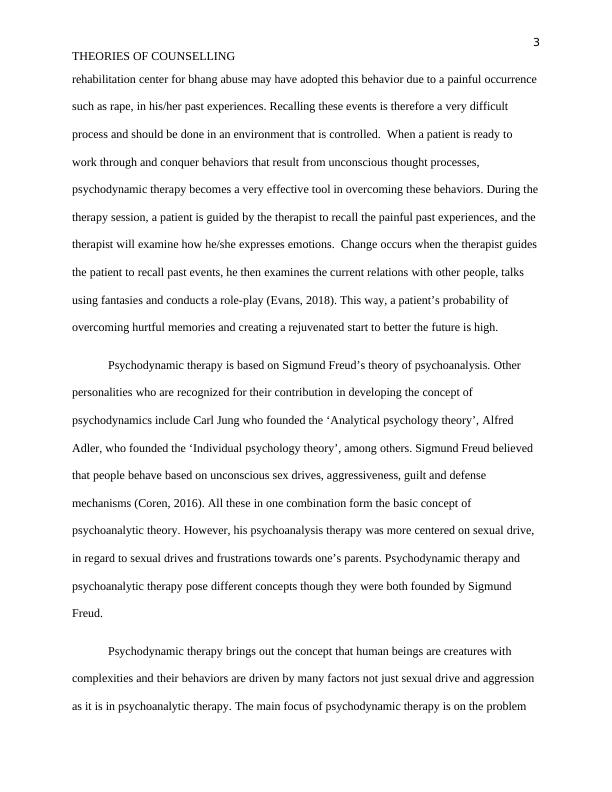Theories of Counselling
10 Pages2576 Words1 Views
Added on 2023-01-05
About This Document
This document discusses the theories of psychodynamic counseling and cognitive behavioral therapy. It explores the concepts, techniques, strengths, and weaknesses of each therapy and provides insights into how they can be used to treat various mental health problems. The document also highlights the reasons behind the choice of these therapies and their effectiveness in helping individuals overcome negative thoughts and behaviors.
Theories of Counselling
Added on 2023-01-05
ShareRelated Documents
End of preview
Want to access all the pages? Upload your documents or become a member.
Counselling Theories: A Comprehensive Guide
|10
|2847
|404
Comparing and Contrasting Cognitive Behavioural Theory and Psychodynamic Theory in Counselling
|6
|1410
|365
Different Approaches to Counselling: Psychodynamic, Cognitive Behavioural, and Humanistic
|7
|1848
|144
Psychopathology Mental Incapability docx.
|4
|779
|12
Psychology: Approaches, Research Methods, and Ethical Issues
|10
|3216
|294
Psychology Assignment | Psychological Theories
|9
|2137
|369



